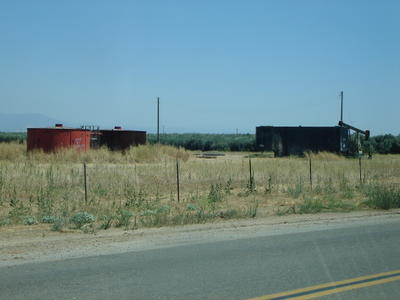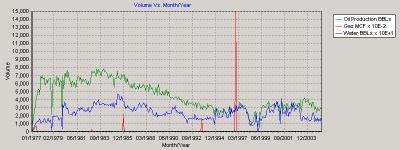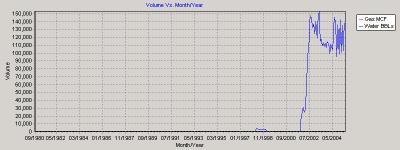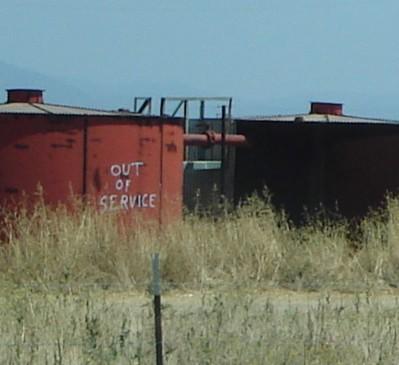Depletion Happens (a little bit at a time)

.
The above picture was taken of a recently closed well in the Deer Creek oil field not far from where my in-laws live. The field is Tulare County’s largest oil field. Actually, it is the county’s only remaining oil field. In 2004, the last year of full records, the field produced 39,000 barrels. For the entire year. Make no mistake about it, this hardly a Ghawar or Canterell. Heck, it’s not even a Midway-Sunset or Kern River field for that matter.
.
Nevertheless it is an instructive tale of depletion, economics and a little bit of enhanced recovery techniques to boot.
.
The State of California keeps fastidious records of many things, and oil production is one of them. Production records and can be easily queried. The graph below depicts production on the oil field.
.

Oil Production from Deer Creek, 1977 to 2005
.
Deer Creek is a heavier oil deposit that ramped up fairly quickly before passing its point of peak oil production (third quarter of 1983). From there you will note a steady decline in production until 1994 when it picked up for a period of around three years until the Asian Financial Crisis kicked the slats out from underneath oil prices. At this point, economics drove oil production faster than underlying geology. Production here dropped precipitously as well owners shut off their pumps (this being lower quality, more viscous oil, production is not too cheap) and held off until prices rose again. When the prices turned upwards again, so did production.
At this point, it gets interesting. As prices started their march upward more steeply in 2000 and 2001 well owners began steam injecting on a large scale. That contributed to a rise in overall production. Yet in 2002 production slipped slightly (again coincident with the 2002 Russian Oil over production event) before once again rising. For a time, it appears that advanced recovery techniques (which are very common in Kern County oil production) stemmed the decline. But not for long.
. 
Injection volumes 1977-2005
As of the last two years, it does appear that the injection driven increases have begun to play out, with the production in the field once again declining. This decline is in all likelihood, terminal, as sky-high crude prices have not resulted in more production. Geologically this region is largely played out and really is not much of a shock to anyone. Still, the story of Deer Creek is useful to remember. All oil fields deplete sooner or later. 39,000 barrels a year is but a drop in the bucket. But the collective drought in these “drops” do add up. Maybe not to the level of losing Cantarell, but every little bit still pushes us ever closer to peak oil.
.

Are you ready yet?


0 Comments:
Post a Comment
<< Home